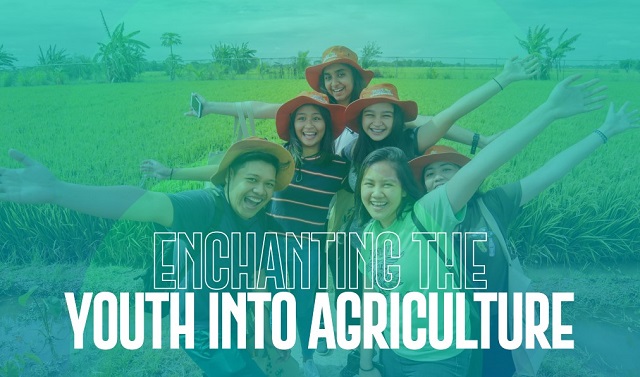
One of the alternative courses of action in disseminating information about agriculture is engaging the youth community. Various programs have been developed to encourage the youth to be involved in agriculture especially in rice farming to help farmers adapt available technologies.
Let’s discover the engagements of the youth in agriculture.
After almost 7 years of implementation, the Special Training for Employment Programs (STEP) by the Technical Education and Skills Development Authority (TESDA), a community-based specialty initiative, is still being sustained to increase employment and opportunities to local communities including the youth.
Agriculture and Fishery is one of the offered courses under the program and attendees obtain free training, assessment, starter tool kits, and training allowance. The program accepts any legal Filipino citizen aged 15 and above. However, the number of students participating in the program has reduced since the pandemic started.
TESDA implements STEP in 57 administered schools, 60 training centers and community-based training classrooms. In February-March 2021, over 2,000 trainees from Cordillera region and Northern Mindanao schools received their starter tool kits.
Sharpening agri grads’ knowledge on rice technologies
To equip new agriculture graduates with knowledge and skills on rice production and technologies, DA-PhilRice Midsayap conducts lectures and field training through the “Rice boot camps” every semester.
The camp raises awareness on the existence and relevance of DA-PhilRice technologies including the PalayCheck System and Palayamanan Plus, AgroEcosystem Analysis, and Minus-One-Element Technique. It also identifies potential R&D workers who could catalyze change toward advanced agriculture.
Eight former trainees under the camp training are now serving at DA-PhilRice Midsayap. Three trainings are slated to allow more new agriculture graduates to acquire proficiency in rice production and technologies.
Youth as infomediaries
Generating alternative communication pathways in agriculture extension, the Infomediary Campaign was launched in 2012. It engaged young people, particularly students, in rice production who served as information providers in their rural communities.
DA-PhilRice trained teachers, introduced them to information sites and provided reading materials about rice production and technologies that they later passed on to students. Students were introduced to available e-platforms such as the DA-PhilRice Text Center and Pinoy Rice Knowledge Bank (pinoyrice.com) where they gathered rice information for their parents and relatives.
Rice farming in the city
It’s been decades since urban agriculture was introduced locally. Since then, many alternatives and technologies were created to introduce farming even in urban areas of the country.
Among these is the Rice Garden that began in 2003. It occupies a 300m2 area in the northwest corner of the Rizal Park, where 200m2 serve as rice demo area and 100m2 for other plants.
Ceremonial rice harvesting is held every November at Rizal Park in Manila in celebration of National Rice Awareness Month. Activities include Likhang Palay, a photography contest; riceApanataym, story-telling adaptation from the TV show ‘wansapanataym’; tour of the Rice Garden and actual harvesting of rice. No thanks to the COVID-19 pandemic, this year’s event will be conducted virtually via Facebook livestream.
PalayKwentuhan
To cope with the online era of learning, the Rice Science Museum (RSM) run by the Community Relations Office developed programs that involve not only farmers but also the youth community. One of these is PalayKwentuhan: “Si Sagib at ang Kanyang mga Paglalakbay” —an online storytelling that featured the exciting journeys of “Sagib” the rice, from seed to plate, together with other characters – the friendly insects, the farmers, and more.
RSM also launched and distributed “PalayKulayan” and “PalayPuzzle” books, which promote and encourage teachers and pupils to learn rice science and arts by coloring and solving puzzles.
RSM continues to broaden its reach up to the far-flung areas and develop more convenient and efficient ways of learning rice science.
By developing strategies to entice youth into agriculture, information is now highly localized in farming communities.




